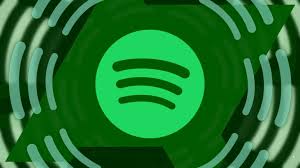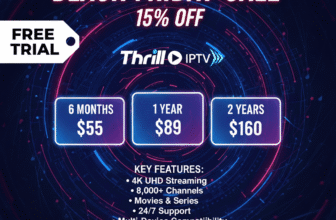
In today’s digital-first world, musicians have access to more tools and platforms than ever to share their work with a global audience. However, while the possibilities are exciting, they also come with challenges, particularly when it comes to turning passion into profit. Monetizing your music isn’t just about uploading a track to Spotify and waiting for the checks to roll in—it requires a well-thought-out strategy and understanding of available resources.
Whether you’re an aspiring artist or a seasoned professional, learning how to monetize your track on Spotify on multiple platforms can significantly impact your music career. This guide will walk you through actionable steps to start earning from your tracks.
Understanding the Importance of Music Monetization
Music creation is an art, but sustaining a career in the music industry requires a business mindset. Without proper monetization strategies, even the most talented artists can struggle financially. By ensuring your music generates income, you can focus more on your craft and less on financial worries.
One of the most effective ways to earn revenue is by using streaming platforms. Spotify, Apple Music, and other services offer royalties every time someone streams your track. Pairing this with other methods, such as licensing your music or selling merchandise, allows you to diversify your income streams.
Distribute Your Music Across Multiple Platforms
Gone are the days when CDs and cassettes were the primary means of distribution. Today, your audience is scattered across various platforms, and it’s essential to meet them where they are. While Spotify remains a top choice, other platforms like YouTube Music, Tidal, and Amazon Music also offer significant earning opportunities.
By using a digital distribution service, you can monetize your track on Spotify on multiple platforms seamlessly. These services help you upload your tracks to numerous streaming platforms at once, ensuring maximum reach and earning potential.
Use Social Media to Your Advantage
Social media platforms are no longer just tools for connecting with friends—they’re powerful marketing engines that can help you grow your audience and boost your revenue. By posting engaging content such as teasers for your tracks, behind-the-scenes videos, or live performances, you can build a loyal following.
For example, platforms like TikTok have the potential to make your track go viral overnight. Pair this with Instagram Reels, YouTube Shorts, and even traditional posts to ensure you’re covering all your bases. Encourage your followers to share your tracks and include links to your music in your bios to drive traffic to streaming platforms.
Offer Exclusive Content to Fans
Fans love to feel connected to their favorite artists, and one way to create this connection is by offering exclusive content. Platforms like Patreon allow you to offer behind-the-scenes access, exclusive tracks, or personalized messages in exchange for a subscription fee.
This not only provides an additional revenue stream but also strengthens your relationship with your audience. Fans who feel valued are more likely to share your music with others, further expanding your reach. Additionally, integrating platforms like Patreon with your existing strategy to monetize your track on Spotify on multiple platforms ensures you’re maximizing every opportunity to earn.
The Power of Licensing and Sync Deals
One often-overlooked revenue stream is licensing your music for use in TV shows, movies, commercials, and video games. Sync deals can be incredibly lucrative, and they also introduce your music to new audiences.
To secure such opportunities, consider working with licensing agencies or submitting your music to platforms that connect artists with media producers. Licensing doesn’t just provide upfront payments—it also generates royalties every time your track is played as part of a project.
Track Your Earnings and Analyze Performance
Data is an artist’s best friend when it comes to monetization. Streaming platforms like Spotify for Artists provide insights into how your tracks are performing. You can see which songs are most popular, where your listeners are located, and which playlists feature your music.
This data allows you to make informed decisions about where to focus your marketing efforts. If you notice a particular city or country showing strong support, consider planning a tour or engaging with fans in that area. By combining performance data with your overall monetization strategy, you can continuously refine your approach and maximize your earnings.
Conclusion
Monetizing your music effectively requires a blend of creativity, strategy, and persistence. By leveraging streaming platforms, licensing opportunities, social media, and exclusive content, you can create a robust revenue stream that supports your artistry. It’s not just about earning money—it’s about creating a sustainable career that allows you to focus on what you love most: making music.
If you’re ready to take the next step, start by learning how to monetize your track on Spotify on multiple platforms. With the right tools and approach, your music can reach more people while helping you achieve financial independence.
Related Articles:
For further reading, explore these related articles:
For additional resources on music marketing and distribution, visit DMT Records Private Limited.







